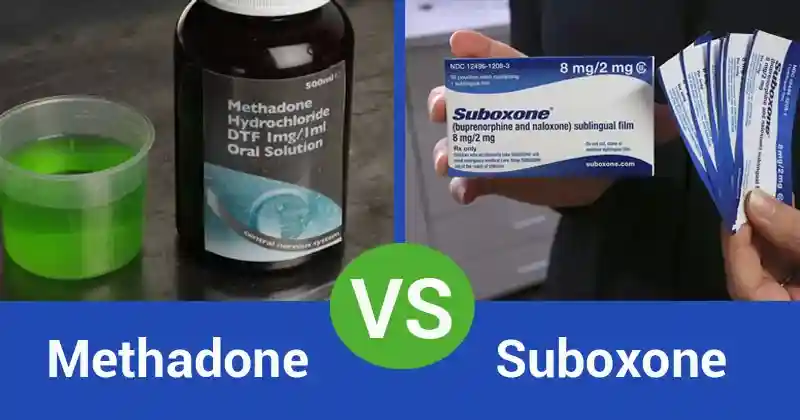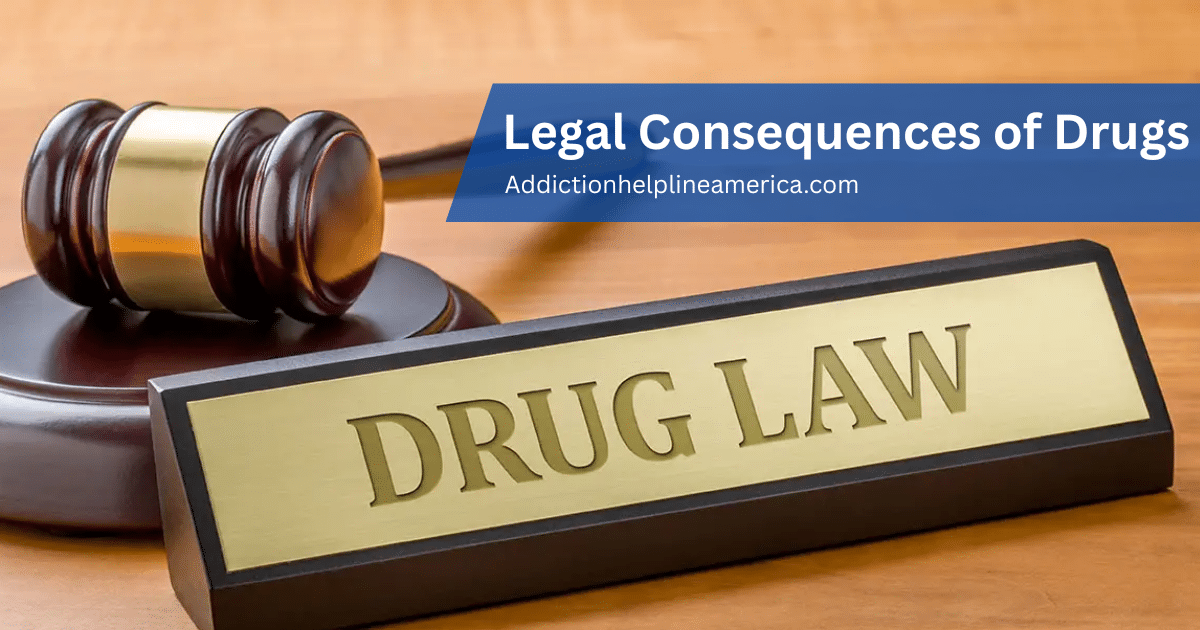
The legal consequences for a drug offense in the United to States aren’t one-size-fits-all. Instead, they’re dictated by a complicated, overlapping system of both federal and state laws. This means the penalty for having a certain drug can change dramatically based on what the substance is, how much you have, and—critically—where the offense happens. What might be a minor citation in one state could be a life-altering felony in another.
The Complex Web of US Drug Laws
Trying to understand drug laws in America can feel like you’re trying to navigate with two different maps—one federal, one state—that often show conflicting routes. This creates a confusing and sometimes treacherous legal landscape.
This dual system is the backbone of all drug enforcement in the country. Federal laws, which are built on the foundation of the Controlled Substances Act (CSA), apply to everyone, everywhere in the U.S. But on top of that, each state has its own set of laws, which can set different penalties or even legalize substances that the federal government still considers illegal.
A Layered Legal System
It helps to think of it as two layers of rules. The federal government sets a baseline for drug control, usually focusing on bigger-picture issues like drug trafficking between states or large-scale manufacturing. Then, states add their own layer of laws on top, which usually deal with smaller, local offenses like simple possession.
This setup creates some real legal gray areas and a lot of uncertainty.
- Take marijuana, for example: It’s legal for recreational use in a growing number of states, but under federal law, it’s still a Schedule I controlled substance. That means if you possess it on federal property, like inside a national park or a federal courthouse, you could face federal charges.
- Jurisdiction matters: A simple possession charge is almost always handled by local police. But if that same charge is tied to a larger operation that crosses state lines, federal agencies like the DEA can step in, and the potential penalties become much, much more severe.
“The most important thing to remember is this: there’s no simple answer to the question, “What’s the penalty for a drug charge?” It always comes down to the specific details of the case and the interplay between federal and state laws.”
Understanding the Foundation of Drug Penalties
The cornerstone of this whole legal framework is a concept called drug scheduling. The CSA sorts controlled substances into five different “Schedules.” A drug’s placement is based on its accepted medical use (if any), its potential for abuse, and how likely it is to cause dependence. This classification is the single biggest factor in determining how harsh the legal consequences will be.
A drug’s schedule influences everything, from the potential prison sentence for trafficking it to the fines for just possessing it. When you or someone you care about is facing the fallout from substance use, getting professional help is a crucial first step. Finding a supportive environment is essential for healing, and resources are available for those seeking addiction recovery in Montgomery, Alabama, and in communities across the nation.
Having this grasp of the dual legal system and drug scheduling is the first step before we can really dig into the specific penalties and the lifelong impact a drug conviction can have.
How the Government Classifies Controlled Substances
To get a handle on the legal consequences of drugs in the United States, you have to start with how the government actually categorizes them. The entire system is built on the Controlled Substances Act (CSA), a federal law that sorts drugs, chemicals, and other substances into five distinct “Schedules.”
Think of it like a ranking system. Every substance is evaluated against two fundamental questions:
- What’s its potential for abuse?
- Does it have a legitimate, accepted medical use in the U.S.?
The answers place a drug into a specific schedule, and that schedule is the primary factor that determines how severe the federal penalties are for its possession, manufacturing, or distribution.
The Five Drug Schedules Explained
Where a drug lands—whether it’s Schedule I or Schedule V—is the single biggest determinant of how it’s treated by the law. Schedule I drugs are seen as the most dangerous. They have a high potential for abuse and no accepted medical purpose, which means they carry the most severe legal penalties. As you go down the list toward Schedule V, the perceived risk drops, and so do the punishments.
This image gives you a sense of just how tangled the web of drug laws can be when you factor in both federal and state regulations.
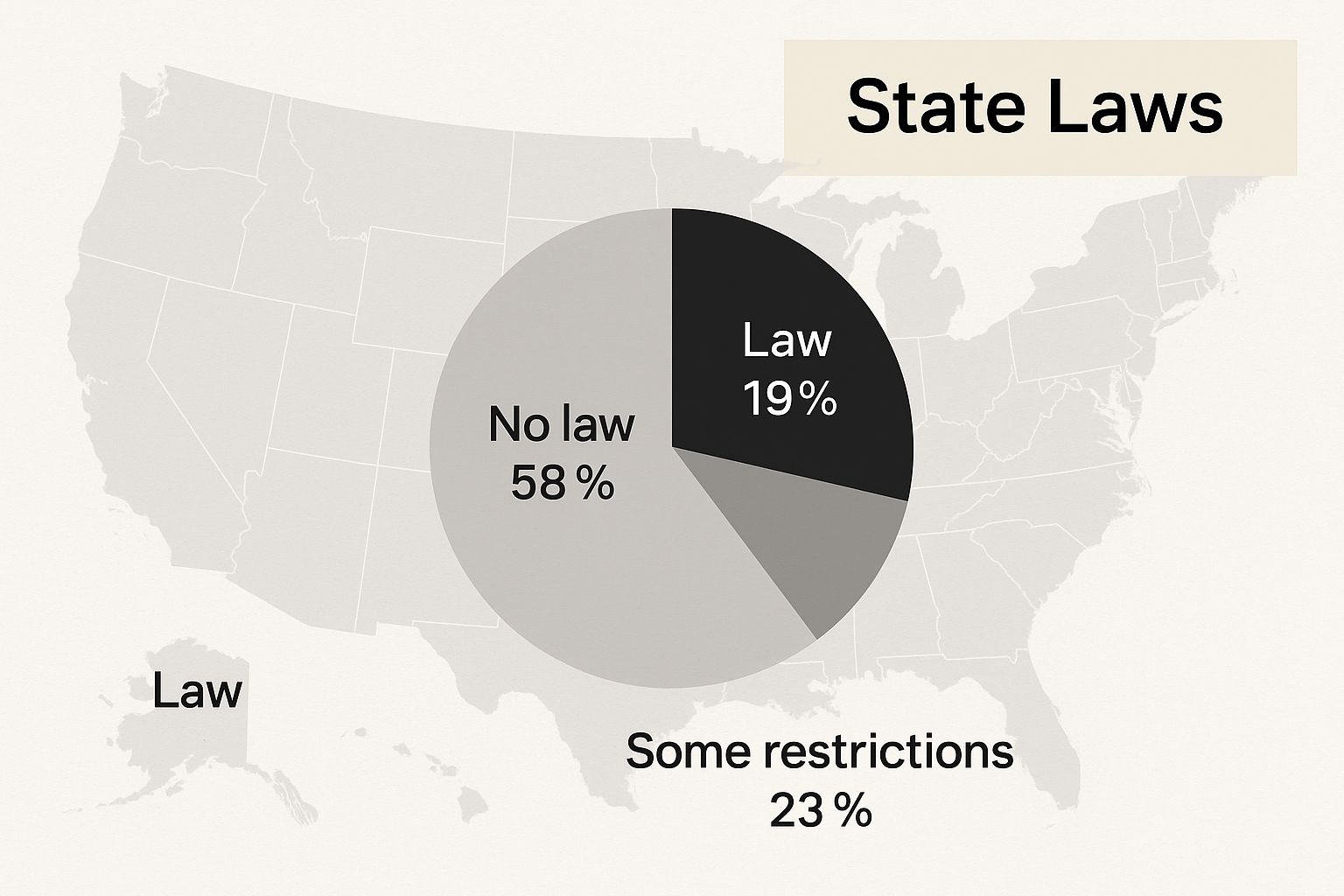
What this really drives home is that while the federal schedules create a national standard, state laws introduce another, often conflicting, layer of rules.
A Deeper Look at Each Schedule
The logic behind the schedules really clicks when you look at the specific criteria. These classifications aren’t random; they’re based on ongoing scientific and medical evaluation.
“The core idea of the CSA’s scheduling system is to directly tie a drug’s legal status to its perceived danger. A higher number (like IV or V) means lower risk and lighter penalties. A low number (I or II) signals high risk and serious legal trouble.”
Public health crises have had a huge impact on how these laws are enforced, especially with the explosion of synthetic opioids. The Drug Enforcement Administration (DEA) now calls fentanyl and its relatives the deadliest drug threat our country faces. It’s a key reason why over 1 million people have died from drug overdoses since 1999. The practice of mixing powerful substances—like when fentanyl is added to meth—skyrockets the danger of a fatal overdose.
The table below breaks down each schedule to give you a clear reference for how different drugs are categorized and why.
Federal Drug Schedules and Examples
This table outlines the five drug schedules established by the Controlled Substances Act, detailing the criteria for each and providing common examples.
| Schedule | Potential for Abuse | Accepted Medical Use | Examples |
|---|---|---|---|
| Schedule I | High | None | Heroin, LSD, Ecstasy (MDMA), Marijuana (federally) |
| Schedule II | High | Severely restricted | Cocaine, Methamphetamine, Fentanyl, Oxycodone |
| Schedule III | Moderate | Yes | Ketamine, Anabolic Steroids, Testosterone |
| Schedule IV | Low | Yes | Xanax, Valium, Ambien, Tramadol |
| Schedule V | Very Low | Yes | Cough preparations with codeine (Robitussin AC) |
Ultimately, this classification system is the foundation for every federal drug case. The drug’s schedule, the amount involved, and a person’s prior criminal record all come together to shape the final legal outcome and the severity of the punishment.
Call now – your recovery starts here!

Understanding Federal Drug Crimes and Penalties
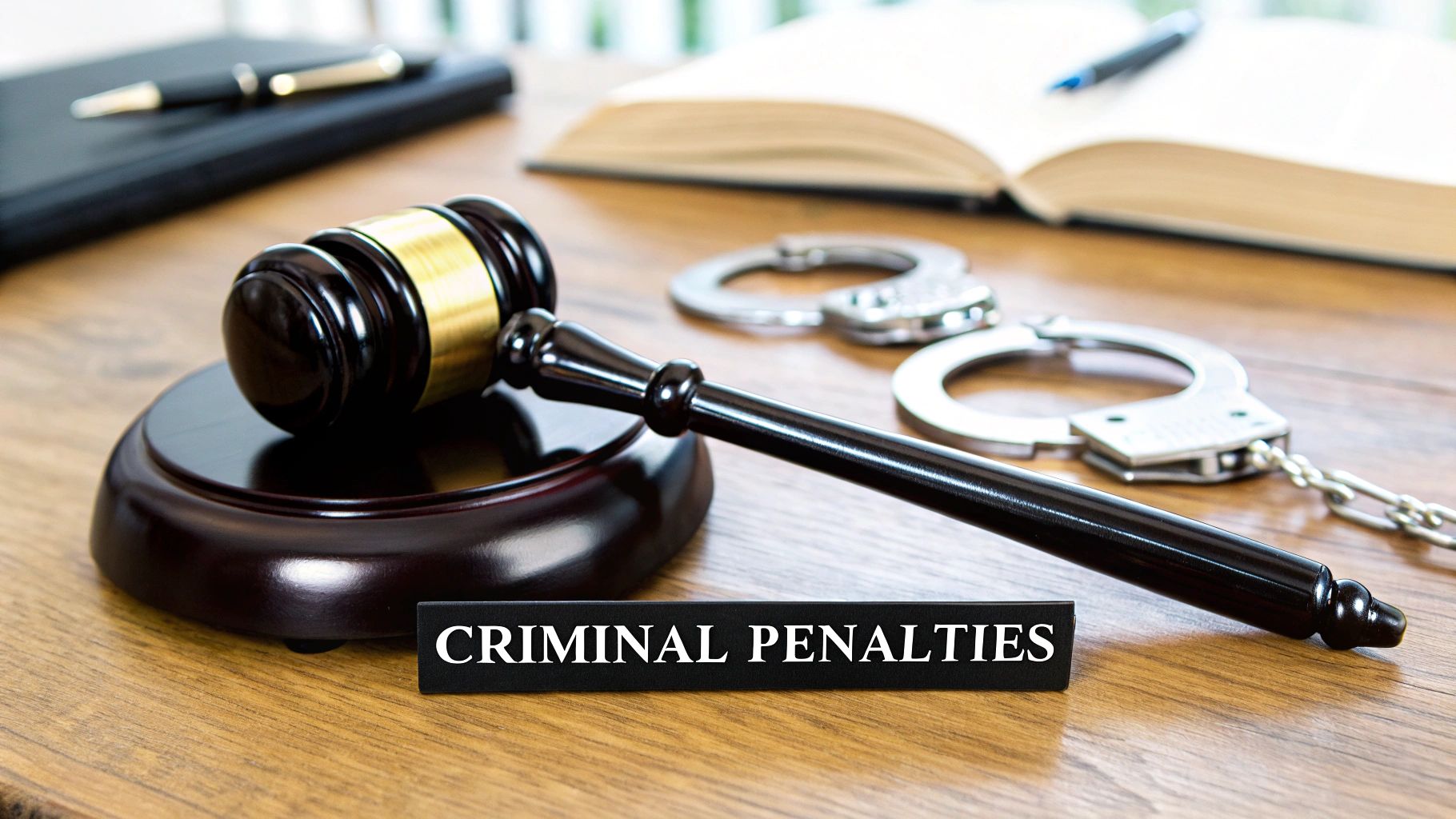
Knowing the different drug schedules is one thing, but understanding how the federal government actually goes after drug offenses is where the rubber really meets the road. This is how the legal consequences of drugs in the United States become real—when specific actions lead to concrete charges.
Federal drug crimes can be broken down into a few main types, each with its own rulebook and potential punishments. While state laws often cover smaller, local drug cases, federal charges are usually brought in for the bigger fish, especially when drugs cross state lines or involve massive quantities.
The Spectrum of Federal Drug Offenses
There’s a world of difference between being caught with a small amount for personal use and being charged as a major trafficker. The penalties aren’t even in the same ballpark. Federal prosecutors build their cases by looking for evidence that points to specific illegal activities.
Here’s a breakdown of the most common federal drug crimes:
- Simple Possession: This is exactly what it sounds like—knowingly having a controlled substance on you for personal use without a prescription. It’s considered the least severe federal drug offense, but even a first-time conviction can land you in prison for up to one year.
- Possession with Intent to Distribute: This charge is a serious step up. A prosecutor doesn’t need to catch you in the act of selling. Instead, they can build a case using other clues, like the amount of drugs found, the presence of scales or baggies, or large sums of unexplained cash.
- Drug Trafficking: This is the big one. It covers the illegal sale, transportation, or importation of controlled substances. Trafficking is a primary target for federal agencies like the DEA and carries some of the most severe penalties, particularly when state or international borders are crossed.
- Drug Manufacturing: This crime involves the actual creation of illegal drugs. Think of someone growing marijuana, running a meth lab, or mixing chemicals to make ecstasy.
“The line between simple possession and “possession with intent to distribute” can be razor-thin. Often, the quantity of the drug alone is enough for prosecutors to argue for the more serious charge, which can dramatically change the potential prison sentence.”
How Penalties Are Determined
So, what determines how much time someone might face? Three main things come into play: the type and quantity of the drug, the defendant’s criminal record, and the specific details of the crime itself. Together, these factors create a sentencing range that can go from simple probation all the way to life behind bars.
Federal drug interdiction efforts are a massive part of this picture. U.S. Customs and Border Protection (CBP), for example, is on the front lines of stopping drugs from entering the country. In a single recent month, CBP seized 742 pounds of fentanyl at the border—a drug so potent it’s often mixed with others, making them incredibly dangerous.
A critical piece of the puzzle is the concept of mandatory minimum sentences. For certain crimes involving specific drug amounts, judges have no choice but to impose a sentence of at least a certain length.
For example:
- Trafficking 1 kilogram or more of heroin can trigger a 10-year mandatory minimum.
- Trafficking 500 grams or more of cocaine comes with a 5-year mandatory minimum.
- If you have a prior felony drug conviction, those mandatory minimums can double.
This rigid sentencing system shows just how serious federal drug charges are. It’s also helpful to understand the history behind why these laws are so strict.
Ultimately, it’s the combination of the drug schedule, the amount, and any prior convictions that creates the complex and often life-altering legal consequences of a federal drug conviction.
The State Versus Federal Divide in Drug Enforcement
Trying to understand drug laws in the United States can feel incredibly confusing, and for good reason. It’s not one system, but two, running side-by-side: state law and federal law. Imagine trying to play a game where two different rulebooks are in play at the same time. Something that’s allowed by one set of rules (the state’s) could still get you a serious penalty under the other (the federal one).
This overlap is the single biggest reason there’s no easy answer to questions about drug charges. The penalties you might face don’t just depend on what you did, but also where you did it and, crucially, who decides to enforce the law.
The clearest example of this conflict is marijuana. While dozens of states have given it the green light for medical or even recreational use, the federal government still hasn’t budged. Under the federal Controlled Substances Act, marijuana is classified as a Schedule I drug, right alongside heroin. This creates a bizarre legal gray area. You could walk into a state-licensed shop and buy cannabis completely legally, but if you then carry it onto federal property—like a national park or a military base—you could be arrested and face federal charges.
Who Decides Which Laws Apply?
So, who makes the call? Is it the local police or federal agents like the DEA? The answer almost always boils down to two things: jurisdiction and scale.
By and large, state and local police handle the overwhelming majority of drug arrests. These are usually the smaller-scale, more common offenses.
- State Jurisdiction: This covers crimes that happen entirely within a state’s borders. A simple possession charge, for example, is almost always handled in a local court under state law.
- Federal Jurisdiction: Federal agencies step in when a crime crosses state lines or breaks a specific federal law. Think large-scale drug trafficking operations, major manufacturing conspiracies, or any drug offense that happens on federal land.
“A small-time dealer operating in a single city is a matter for local police. But a trafficking organization moving large shipments across three states? That’s a federal case. The evidence might look similar, but the legal framework and the potential prison time are worlds apart.”
This division is why your physical location can dramatically change the outcome of a drug case. Possessing a certain amount of a substance might result in a slap-on-the-wrist fine in one state, a lengthy prison sentence in the one next door, or a federal indictment if the feds decide it’s part of a bigger picture.
Why Knowing Both Is Crucial
Because of this layered system, just knowing your local laws isn’t enough. You can’t afford to ignore the federal rulebook. Federal law is always there in the background, and prosecutors can choose to bring federal charges, especially if the case involves large drug quantities, firearms, or what they see as organized crime.
Ultimately, this means the legal consequences for a drug offense in the U.S. are never set in stone. They are a fluid, often unpredictable result of the constant push-and-pull between two powerful legal systems. A person’s freedom can literally depend on which one ends up taking their case. To really grasp the risks, you have to be aware of both the laws in your state and the federal laws that apply to everyone, everywhere in the country.
Life After a Drug Conviction: The Hidden Consequences
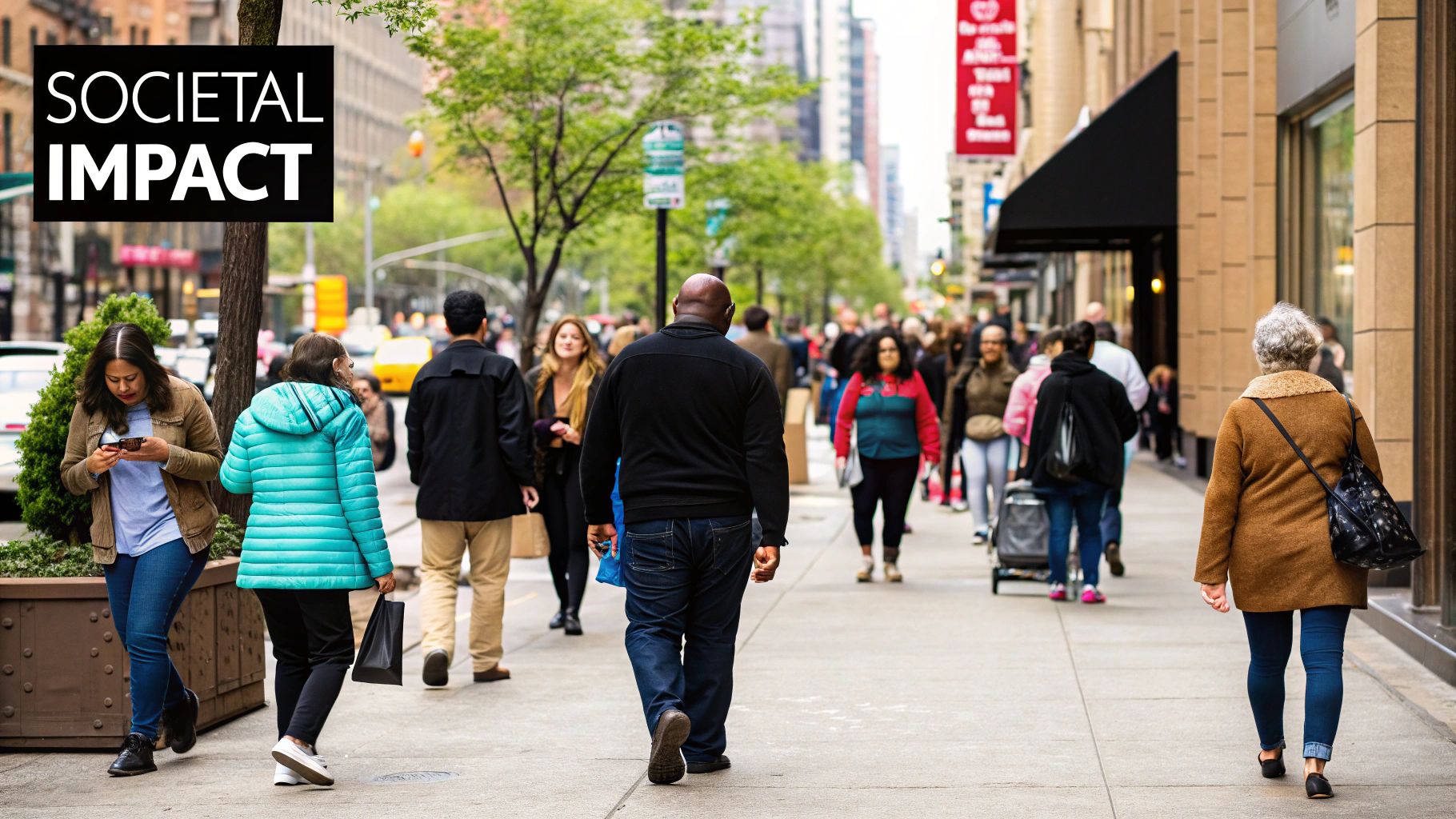
When the judge’s gavel falls and the sentence is handed down, most people think the legal battle is over. The reality is, for many, the official sentence is just the start of a much longer, quieter struggle against the hidden legal consequences of drugs in America.
These aftershocks are often called “collateral consequences.” They aren’t part of the judge’s formal sentence, but they kick in automatically as soon as a conviction is on the books. Think of them as invisible walls that spring up long after someone has served their time, making it incredibly difficult to get back on their feet and rebuild a normal life.
Imagine being released from prison, ready to start fresh, only to find that your past conviction follows you like a shadow. These aren’t just minor speed bumps; they are massive, often permanent, roadblocks.
Lasting Barriers to a Stable Life
The ripple effects of a drug conviction seep into almost every part of a person’s life. Things most of us take for granted—a job, a place to live, an education—suddenly become privileges that are just out of reach. This creates a vicious cycle of punishment that keeps going long after the prison gates have opened.
Here’s where these consequences hit the hardest:
- Finding a Job: A criminal record, especially for a drug felony, can feel like a red flag to employers. Many companies run background checks and immediately screen out anyone with a drug conviction, no matter how qualified they are or how long ago the offense was.
- Securing a Home: Landlords are notorious for denying rental applications from people with drug convictions. This can push individuals into unstable housing or homelessness, which only makes it harder to hold down a job.
- Getting an Education: A drug conviction can make you ineligible for federal student aid, like Pell Grants and student loans. For many trying to turn their lives around, this slams the door on higher education.
- Professional Licensing: Want to be a nurse, lawyer, teacher, or even a truck driver? Many of these careers require a state license. A drug conviction can lead to that license being denied or revoked, ending a career before it even begins.
- Voting Rights: In many states, a felony drug conviction means losing your right to vote. Depending on where you live, that loss could be for life.
“The hard truth is that the punishment doesn’t end when the prison sentence does. For millions of Americans, a drug conviction becomes a life sentence of closed doors and lost opportunities, making it nearly impossible to become a productive member of society again.”
A Growing Problem with Lifelong Impact
These consequences are a massive problem, especially when you look at the sheer number of people using drugs. Despite the severe penalties, recent data shows that nearly 48 million Americans—that’s 16.8% of everyone aged 12 and older—used an illegal drug in the past month.
For those who get caught up in the system, the stories are heartbreaking. Take the case of Loni Willison, whose struggles with addiction and the ensuing challenges show the devastating personal toll substance use can take. Her story is a powerful example of how legal and social barriers can make recovery feel almost impossible, highlighting just how severe the long-term legal consequences of drugs really are.
Call now – your recovery starts here!

Frequently Asked Questions About US Drug Laws
It’s completely normal to feel a bit lost when trying to understand the tangle of US drug laws. Even after learning about federal schedules and state-specific rules, a lot of practical questions can pop up. Let’s clear the air and tackle some of the most common ones.
Can I Be Charged if I Am with Someone Who Has Drugs?
Yes, absolutely. You can face serious drug charges even if the drugs aren’t in your pocket. This all comes down to a legal idea called constructive possession.
Here’s a real-world scenario: you’re a passenger in a friend’s car when it gets pulled over. The police search the vehicle and find drugs under your seat. Even if they aren’t yours, a prosecutor could argue you were in constructive possession. They just need to show two things: that you knew the drugs were there and that you could have reached out and grabbed them. This concept is a big reason why drug possession laws have such a wide net.
What Is the Difference Between Decriminalization and Legalization?
People often use these words as if they mean the same thing, but in the eyes of the law, they are worlds apart. Knowing the difference is key to understanding modern drug policy.
- Decriminalization means that having a small amount of a drug for personal use is no longer a crime that can land you in jail. Instead, it’s treated more like a traffic ticket—a civil infraction with a fine. The drug is still illegal to make or sell.
- Legalization takes it a step further. This is where the government steps in to create a regulated system for producing, selling, and taxing a drug. The legal cannabis markets in states like Colorado and California are perfect examples.
Essentially, decriminalization reduces the penalty for personal use, while legalization creates an entirely new, legal industry for a substance.
“While both policies are designed to ease the strain on our courts and prisons, only legalization has the potential to completely dismantle the illegal black market for a drug. Decriminalization still labels the substance as forbidden, just with less severe consequences for the user.”
Are Prescription Drug Charges As Serious As Illegal Drug Charges?
Without a doubt. In many situations, charges related to prescription medications can carry penalties that are just as harsh—and sometimes even harsher—than those for well-known street drugs like heroin or cocaine.
The federal government is cracking down hard on the illegal use and sale of pharmaceuticals like OxyContin, Vicodin, and Fentanyl. Simply having these powerful opioids without a legitimate prescription, or giving or selling them to someone else, is a felony.
Given their high potential for abuse and their central role in the opioid crisis, the legal fallout can be devastating. For example, trafficking prescription painkillers can trigger federal charges with the same kind of mandatory minimum sentences that apply to trafficking heroin.
This really highlights a critical point: a drug’s legal status often comes down to how you got it and how you use it, not just what it’s called.
Struggling with any substance, prescribed or not, can be an overwhelming and lonely experience. If you need someone to talk to, you can get help for drug addiction through programs designed to offer confidential support and treatment pathways.
Our helpline is 100%
free & confidential
If you or someone you care about is struggling with drug or alcohol addiction, we can help you explore your recovery options. Don’t face this challenge alone—seek support from us.
Programs
Resources
Will my insurance
cover addiction
treatment?
We're ready to help
Find the best
drug or alcohol treatment
center
Are you or a loved one struggling with addiction? Call today to speak to a treatment expert.






